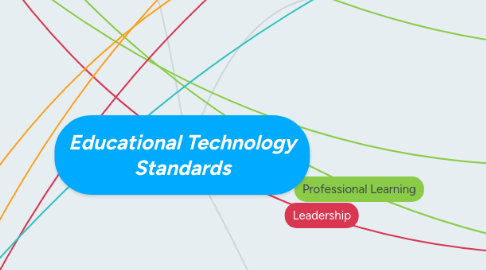
1. LPTF:
1.1. Student-centred Learning
1.1.1. Teachers model lessons and use technology according to students needs
1.2. Research and Innovation
1.2.1. Teachers actively take part in research to better education
1.3. Professional Learning
1.3.1. continual professional development as a lifelong learner
1.4. Leadership
1.4.1. teachers work within the system to support learning via technology
1.5. Access, Infrastructure and Digital Learning Environments
1.5.1. Students, educators etc. have access to the network needed for learning
2. ICT: Information Communication Technology
2.1. Students will COLLABORATE using technology
2.1.1. This may include the use of digital tools such as Google Docs to work together on projects.
2.2. With the use of technology, students will problem solve and investigate to further their understanding.
2.2.1. Students might use a program to organize their thoughts in order to better investigate, research and solve a problem.
2.3. Technology is used to construct meaning from knowledge or comcepts.
2.3.1. Students make connections to what they are learning to gain a broader perspective of ideas.
2.4. Students use technology ethically
2.4.1. They will demonstrate ethically and morally sound digital citizenship
2.5. Students will use technology safely and ergonomically
2.5.1. With proper posture and good ergonomics
3. ISTE (International Society for Technology in Education) Standards
3.1. For Students
3.1.1. Empowered Learner
3.1.1.1. Students make personal learning goals and use technology to actively participate in learning
3.1.2. Digital Citizenship
3.1.2.1. Students carry out digital citizenship safely, ethically and legally.
3.1.3. Knowledge Constructor
3.1.3.1. Students collect, construct and organize information using a variety of digital tools
3.1.4. Innovative Designer
3.1.4.1. Students use technology devices and tools to problem solve
3.1.5. Computational Thinker
3.1.5.1. Students utilize technology to compute, analyse and test data.
3.1.6. Creative Communicator
3.1.6.1. Students communicate according to their goals using various technology programs etc.
3.1.7. Global Collaborator
3.1.7.1. Students gain broad and varied perspectives as they get connected locally and globally to collaborate with others.
3.2. For Teachers
3.2.1. Facilitate and Inspire Student Learning and Creativity
3.2.1.1. Teachers promote and guide students as they discover learn new concepts using various digital tools
3.2.2. Design and Develop Digital Age Learning Experiences and Assessments
3.2.2.1. Teachers customize learning for students according to the ISTE standards for students using current technology and encourage students to make their own learning goals.
3.2.3. Model Digital Age Work and Learning
3.2.3.1. Teachers demonstrate fluency in technology in the context of the professional, digital age and global society.
3.2.4. Promote and Model Digital Citizenship and Responsibility
3.2.4.1. Teachers advocate and set an example for students on appropriate use of technology.
3.2.5. Engage in Professional Growth and Leadership
3.2.5.1. Teachers set an example as lifelong learners through continual professional development an learning goals.
